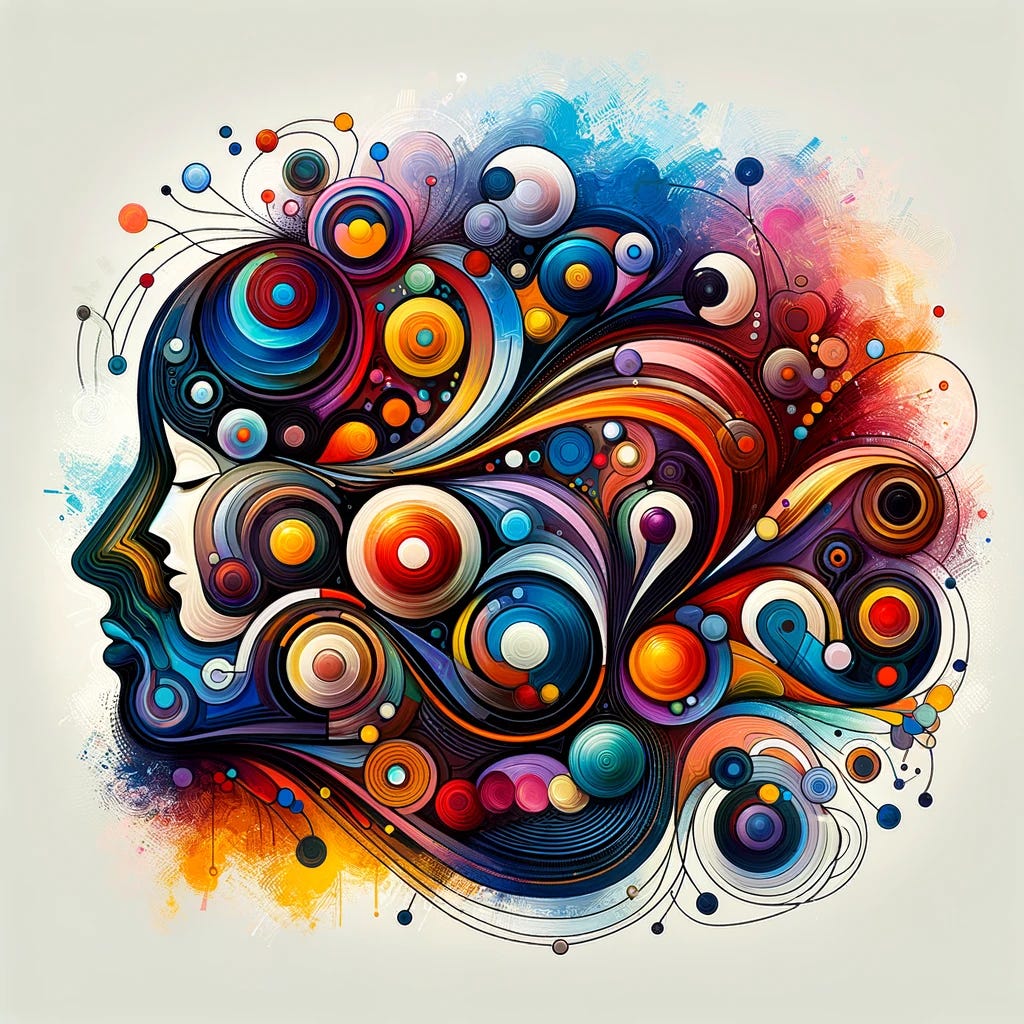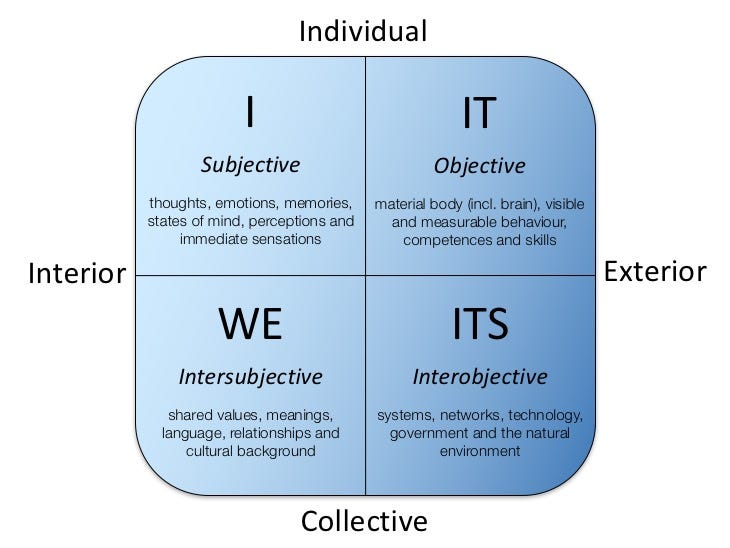An Integral Approach to the Future of Work: Embracing AI and Human Potential
A profound transformation is underway in today´s working environment. It’s a shift that blends the speed and precision of artificial intelligence (AI) with the depth of human insight, a mix of capabilities that Ken Wilber’s Integral Theory helps us navigate with clarity and purpose. This theory, with its focus on the ‘interior’ and ‘exterior’ dimensions of individual and collective experiences, offers a lens through which we can view the future of work — a future where AI and human potential can converge harmoniously.

Why use the Integral Model?
The beauty of Integral Theory lies in its holistic perspective. It doesn’t just look at what we can measure and observe — the ‘exterior’, where AI excels in processing data and executing tasks. It also values the ‘interior’ — our thoughts, feelings, and relationships, realms where human beings shine.

The model categorizes aspects of reality into four distinct dimensions: the interior individual (I), the exterior individual (It), the interior collective (We), and the exterior collective (Its).
By applying this model, we recognize the full spectrum of a workplace that is evolving with AI, ensuring that we don’t lose sight of the human dimension that breathes life into every organization.
AI in the Exterior dimension: Precision and efficiency
Picture this: AI systems, like diligent bees, manage customer data, automate repetitive tasks, and even predict market trends. They work tirelessly, providing businesses with invaluable insights and speed of production.
Many companies looking to get started with AI get their feet wet by using simple AI tools to revolutionize customer service, handling inquiries with a speed that was previously unthinkable. Yet, this is just the beginning of what AI can offer in the exterior dimensions of our work. As businesses continue to explore the full potential of AI, they will unlock capabilities in orchestrating complex processes that currently demand a lot of human capacity.
The human touch in the Interior dimension: Empathy and creativity
But there’s more to work than data and tasks. It’s about the conversations over coffee, the collaborative sessions that spark innovation, the joy of creation and the empathetic ear offered during tough times. These are the moments where human qualities like empathy, emotional intelligence, and creativity come into play, thriving in the ‘interior’ dimension that AI does not encompass.
Consider a teacher using AI tools to manage grading, freeing her to focus on nurturing her students’ curiosity and emotional well-being — a perfect example of this synergy. In health care, AI can manage patient data, diagnostics, and treatment plans (exterior), while healthcare professionals get more time to focus on patient care and empathy. Feeling loved, seen, heard and understood by another human being is something a machine can never replace, no matter the amount of seemingly good counseling you can get from a chatbot. There is simply noone there.
Merging AI and human skills: A collaborative symphony
The future of work, as envisaged through the Integral framework, is not a solo performance by either AI or humans but a collaborative symphony. It’s about AI managing the ‘It’ and ‘Its’ with efficiency and precision, while humans excel in the ‘I’ and ‘We’, bringing emotional depth and sensitivity. It’s a partnership where AI’s capabilities in handling exterior tasks complement the irreplaceable interior qualities of humans.
The warmth of leadership and culture
In this new era, leadership and organizational culture must adapt to cherish both AI’s efficiency and the human spirit. Leaders are no longer just decision-makers but also nurturers of a workplace where technology and human talents support each other. A culture that encourages continuous learning and emotional well-being becomes essential, blending technological competencies with a sensitivity towards the diverse emotional needs, morals, cultural backgrounds, and the unique human experiences of each team member.
Preparing for a future-proof workforce
As we understand and embrace this integral approach, the focus shifts to preparing a workforce that is as adept with technology as it is with emotional and interpersonal skills. This means investing in training that not only enhance technical proficiency but also foster inner development, ethical reasoning, and cultural sensitivity.
While the purpose of paid work is to provide an income, the purpose of any human endeavor as such is the meaning it provides — which is an inherently interior, subjective experience that simply does not apply to machines. This should bode well for letting the machines take over the busywork and leaving the more fulfilling activities to us.
The future of work will be about recognizing the strengths of AI in the exterior dimensions while cherishing and nurturing the human qualities that make our professional experiences truly meaningful. As we navigate this path, let’s remember that the heart of every organization beats not just with data and algorithms, but with the aspirations, creativity, and connections of its people.
An Integral Approach to the Future of Work: Embracing AI and Human Potential was originally published in Compendium on Medium, where people are continuing the conversation by highlighting and responding to this story.